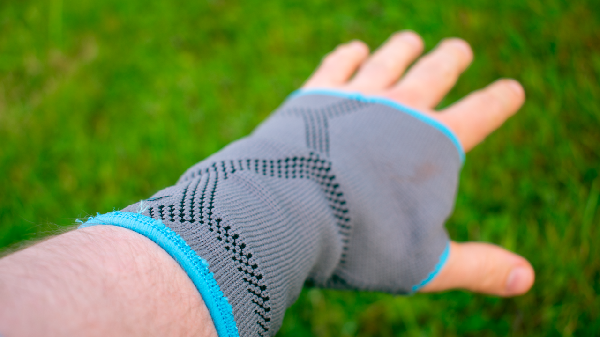04/10/20 (5 Minute Read)

No matter what we do, at some time or another we’ll find ourselves on the sideline with an injury. This is an unfortunate reality of life that isn't exclusive to those who train or visit the gym regularly. Someone can be injured at work and never take part in sport at all. It is far better to be active and strong and experience an injury than to be weak and inactive and suffer an injury. The latter can result in a far slower recovery than for those who exercise regularly.
If you are regularly active and take part in weight training and mobility work, you are protected to a much larger degree than those who don’t. This is the result of increased bone density and resilience through full ranges of motion.
So if you do suffer an injury, what should be done to return you to previous performance levels? As a strength and conditioning coach to rugby, field hockey, hurling, and soccer athletes, I see a lot of people who have come from the physio office with a page of exercises and no idea how to make progress after they are out of pain, and struggle along without any direction and often return to the physio with an aggravation of an old injury.
Trusted guidance and breaking the cycle
My circle of trusted physios is very narrow, and I often tell people, if they’re seeing a physio for an issue and are not seeing a consistent improvement in their injury after each session and prescribed exercises, to seek out another. This could be to book a consultation or just to make a phone call and discuss treatment history.
Once you have received treatment and are able to return to training openly, it is incredibly important to do so under guidance, as this is the start of the journey to make sure you don’t return to the physio with the same problem.
When athletes start their work with me, I emphasise progression skills that don’t demand anything of their injury. This is to make sure that, even while dealing with a setback, you are still building towards your ultimate goal and therefore have a sense of success even while taking things slowly. Most importantly people will often bring you through a progression scheme similar to below, which will build you to your previous strength and give you the opportunity for going beyond.
Phases of strength progression
The first phase to clear is a pain free range of motion, if the injury is to one of your limbs, we compare it to the uninjured side and make sure that before we restore it to this level before advancing to the next stage of training.
Phase two focuses on rebuilding strength in the muscle, by loading/training the concentric contraction of exercises. If the injury is to the torso, focusing on the concentric may not be possible or conveniently done, so holding an isometric contraction may be a better alternative while not overloading the muscle and halting its recovery.
Each phase builds on the last, so phase three incorporates eccentric contractions, which in simple terms is the negative of the rep or the lowering of the weight. Building up your tolerance for load in this phase is really crucial and to take it very slow, only add a maximum of 1.25 to 2.5kg to isolation exercises 1-2 times per week for the recovering muscle group.
The final phase is to return to a comprehensive and balanced training plan that eases you back into the activity that builds towards your goals and addresses the issues that lead to your injury in the first place.
If possible I recommend you follow the guidance of a coach to bring you back to your previous performance standards and to ensure your progression is appropriate. However if you do not have access to this guidance here are some things you can implement.
Monitoring and self-awareness
Don’t allow the lesson of your injury to go to waste. Practise internal monitoring by asking yourself how the movements feel; is that how they're supposed to feel, and are the right muscles activating?
To externally monitor your performance, use a video of yourself or a coach/professional to ensure you’re hitting key technical points and avoiding prominent faults. For example, in the squat, maintaining good posture, knee drive, core/glute engagement, and avoiding knee valgus and posterior pelvic tilt.
Track your workouts using a spreadsheet or workout journal and ensure you are taking de-loads and training breaks at regular intervals or when necessary if stress/strain levels go beyond functional.
Understand the balance that lies between training and recovery and that drinking a protein shake after a workout is not enough of an effort to ensure maximum recovery is achieved. Sleep, sleep quality, good whole foods in a balanced plan with variety and recovery/light training sessions are all part and parcel in achieving a balanced scale.
When it is balanced, you can train harder, for longer, and make the most of your sessions; often meaning your work has a higher potency.
While it is not fun to experience an injury, there is always a silver lining. We can learn, adapt, and overcome the situation while developing our knowledge so that we avoid the same issue in the future.
If you need further detail or direction you can reach me via my website www.tribesmentraining.com or via my Gym Advisors profile HERE